
|
|
|
Privacy Policy | Editorial Policy | Profit Policy | Join the Association | List of Members | Contact us | Index | Links
Back Go to page: 1 2 3 4 5 6 7 8 9 10 11 12 13 14 15 16 17 18 19 20 Forward
Contents:
|
|
ENGRAD Course, 1986
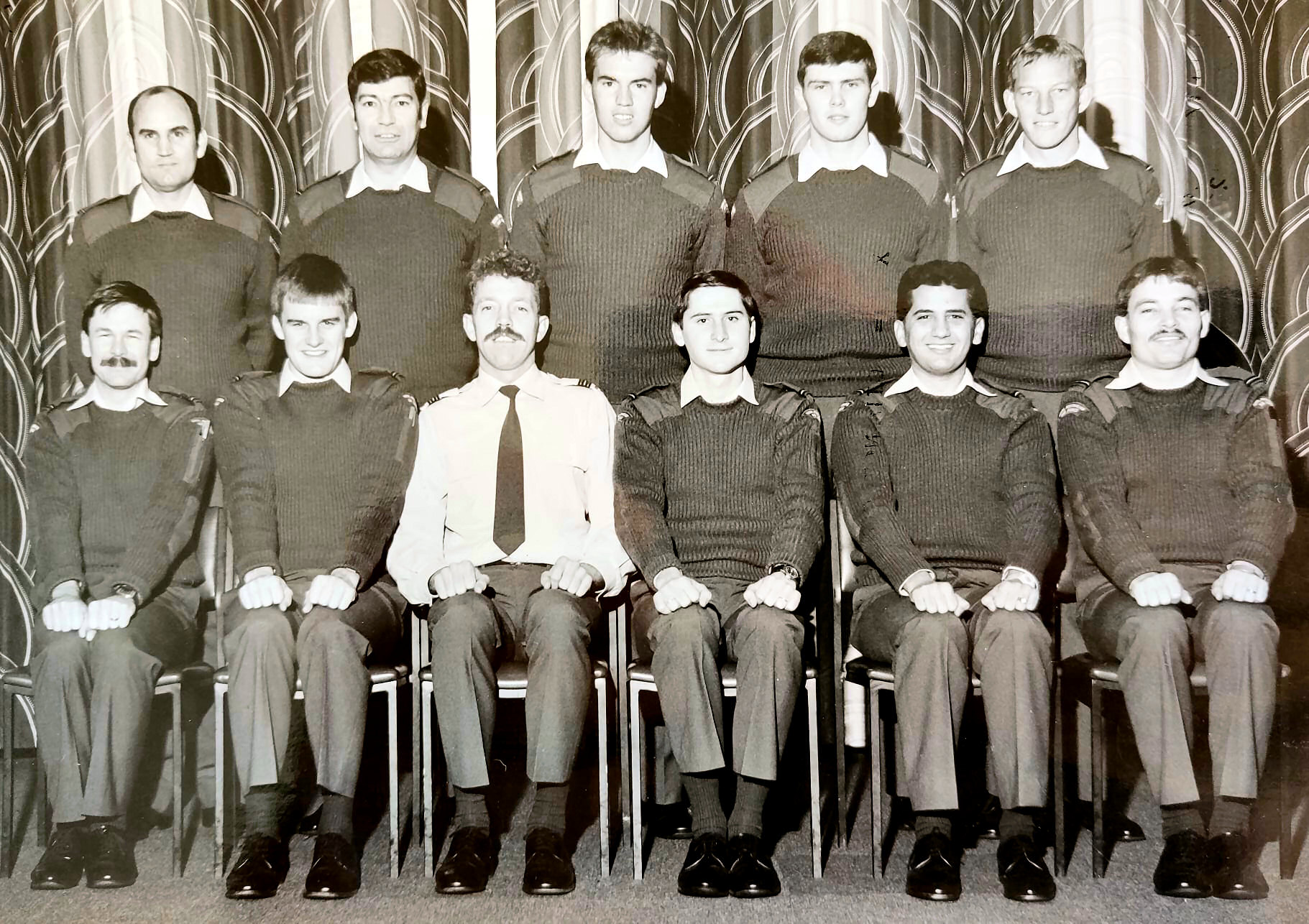
Back Row L-R: Ben Hall, Arnie Vereschildt, Garry Hale, Phil Boyd, Dave Pitts.
Front Row L-R: Bill King, Steve Mogg, John McBride, Darren May, George Frazis, John Turner.
285 Squadron, Richmond.

On the 24 August 1999, No 285 Squadron was formed at RAAF Base Richmond from the training sections of No 33 Squadron (Boeing 707), No 36 Squadron (C-130H), No 37 Squadron (C-130J) and No 503 Wing (maintenance workforce). With the retirement of the Boeing 707 in 2008 and the C-130H in 2012, a decision was made to transition C-130J training into its operational unit, 37 Squadron, commencing in January 2018. The majority of instructors and support staff joined 37 Sqn with the remainder joining the Air Mobility Training and Development Unit (AMTDU).
Commander Air Mobility Group, Air Commodore Richard Lennon said No. 285 Squadron had served RAAF at a critical time in history. “The past 18 years have witnessed the Australian Defence Force conduct sustained missions to Iraq, Afghanistan, East Timor, and carry out numerous disaster relief operations. 285 Squadron has played a critical role in training RAAF’s air mobility workforce that delivered and sustained these operations. Its creation coincided with new simulator technology that released many real aircraft from the need to conduct flying training, and allowed them to fly on operational tasks.”
The Squadron has provided students with instruction in a range of environments, from training devices and cockpit simulators, through to international tasks to New Zealand and Papua New Guinea. It also played a role in training crew attendants for the RAAF’s Special Purpose Aircraft fleet and conducted specialist training courses in fuel quality management.
“Much of No. 285 Squadron’s training has been drawn from operational experience, but it has also strived to be at the forefront of new training methods and techniques. “In recent years, the Squadron has played a leading role in applying ‘Live, Virtual and Constructive’ training, which saw it network its C-130J simulator to exercises in the United States,” Air Commodore Lennon said.
No 285 Squadron disbanded following a ceremonial parade held at Richmond on 8 December 2017.
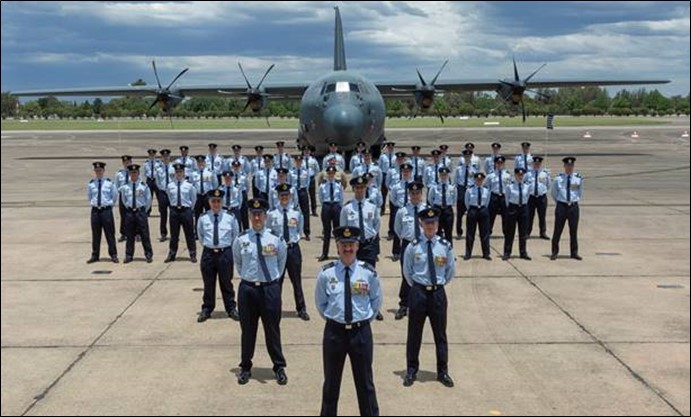
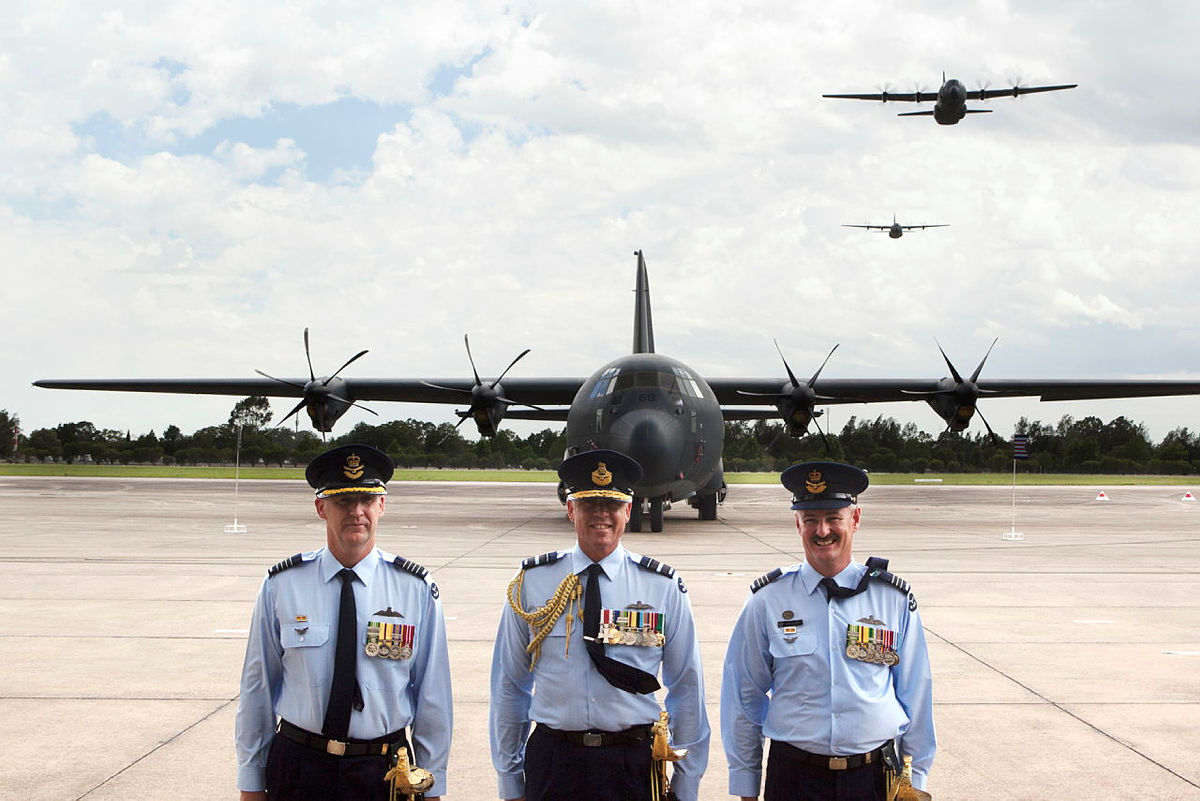
L-R: OC Number 84 Wing, Group Captain Paul Long, Air Commander Australia, Air Vice-Marshal Steven Roberton, DSC, AM, and CO 285 Squadron, Wing Commander Jason Baldock during the disbandment parade at Richmond.
Winjeel to Moresby.
Back in 1978, Roger Wilson was tasked in getting an ex-RAAF Winjeel from Williamtown up to Moresby. The aircraft was donated to the Moresby TAFE to be used as a training aid for PNG’s budding LAEMEs.
After leaving Australian airspace, Roger called into Daru to clear customs then in company with a PNG Nomad, flew direct Daru to Moresby. The little Winjeel didn’t have the endurance to fly Daru - Moresby via the coast, as is the rule for single engine aircraft, so he hooked up with a twin and planned direct.
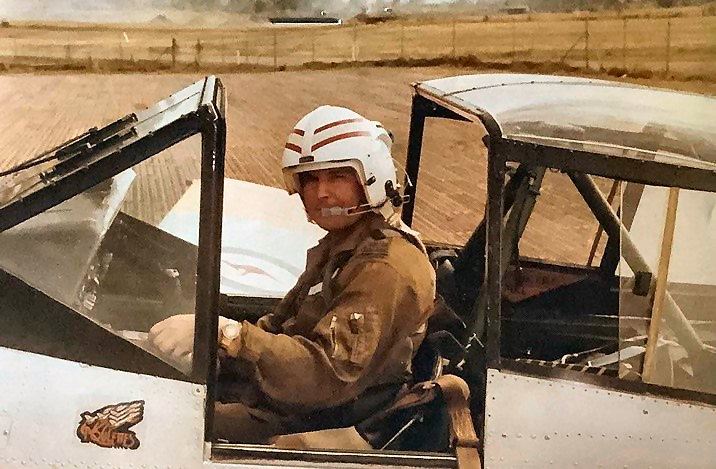
The aircraft stayed in Moresby for some years then somehow found itself at the Army Museum at Oakey then in 2016 it come down the hill to Amberley where it now sits just inside one of the Amberley heritage Museum’s hangars.
ANZAC Day 2021, Geraldton WA.
Ken Morris
WA’s COVID19 social distancing rules meant that it would have been illegal to hold our normal commemorative services at Geraldton’s Birdwood House unless we fenced the whole area and controlled the numbers attending by making it a ticketed event. This was made clear to us by Police Superintendent Roger Beer and the City of Greater Geraldton Council and it would have cost around $20,000.00 to do, well beyond our means The RSL committee’s response was to plan an ANZAC Day service for veteran’s and RSL members only, keeping us to the under 500 people category which was allowed under WA state law. That was the reason smaller RSL’s like Northampton, Dongara etc. were able to conduct their normal services and we were not.
Covid distancing regulations forced us to have a dawn service instead, at a local footy oval.
The decision to hold it at the football oval caused an outcry and a lot
of controversy and our committee was accused of not supporting ANZAC
Day, unfairly in my view. Someone hit on
the logical idea that if we couldn’t reduce the size of the crowd we
would have to increase the size of the venue to comply with the social
distancing regulations and that’s where the idea was born to hold a dawn
service at Wonthella Oval, home of
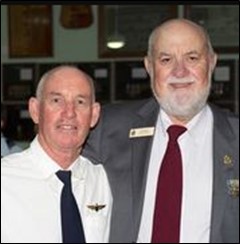 the
Towns Football Club who had a bye that weekend.
the
Towns Football Club who had a bye that weekend.
Paul (Butch) Pettet and his wife Caroline operate a café in Geraldton and also an air charter business. Butch got some mates together and did a light aircraft flyover for our rescheduled ANZAC Day service at the oval. The RAAF was booked for a flyover at Birdwood House at 11.00 but couldn’t make it.
Paul Pettet and Ken Morris
The stakeholders then had the problem of how to conduct an ANZAC Day Dawn Service in a football field, with no flagpole, dais, cenotaph, power, public address system, seating, QR code mounts, suitable lighting, toilets - the list goes on and on.
As you all know now, we pulled it all together on the day. This was by no means all due to the RSL. We had massive assistance from the City Council, The Chamber of Commerce and many of their member businesses, F Troop of the Pilbara Regiment, Geraldton Police, the 11th Battalion Living History Unit and many more. Bearing in mind that Cyclone Seroja tore through the area during this preparation period it makes it all the more remarkable that everything did go so well on the day.
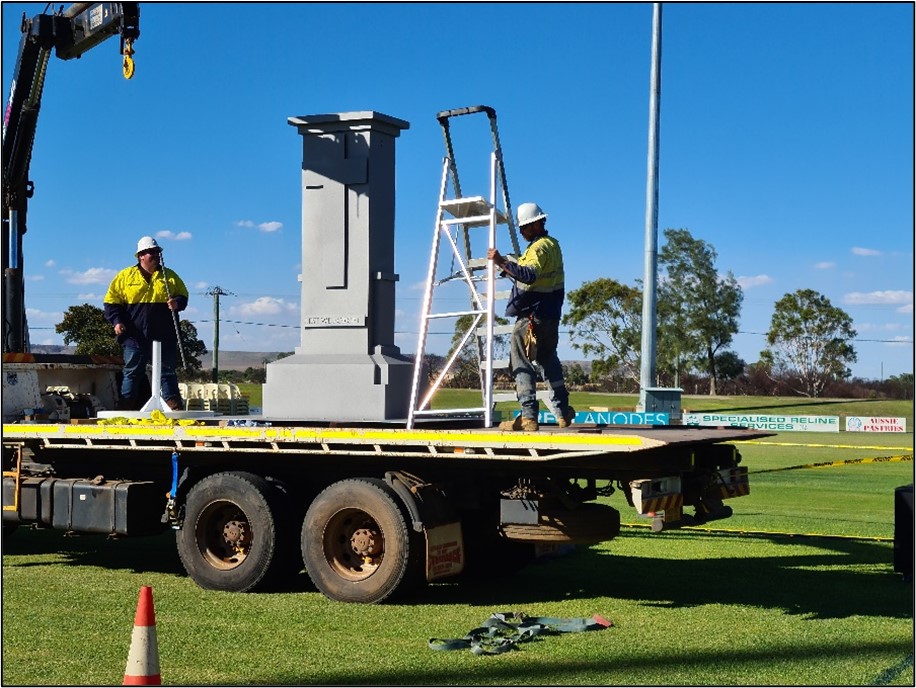
The picture above shows DIAB engineering staff delivering a ¾ scale model of our cenotaph the day before ANZAC Day. The Kelmscott-Pinjarra 10th Light Horse Memorial Troop were ably represented by Verna Holmes and Tasha in Light Horse period uniform and two horses in tack of the time.
The picture below right is of committee member Ken Lawson by the cenotaph at Birdwood House, after the wreaths were recovered to that site later in the morning. You can see how faithfully the temporary cenotaph, fabricated entirely from 3mm sheet steel, resembles its model. It gets its stony appearance from the way in which it was sandblasted. This cenotaph is now installed at the Gallipoli Trench Project, a re-creation of Gallipoli’s Leane’s Trench situated at Northern Gully, East of Geraldton. The site is maintained by members of the 11th Battalion Living History Unit.
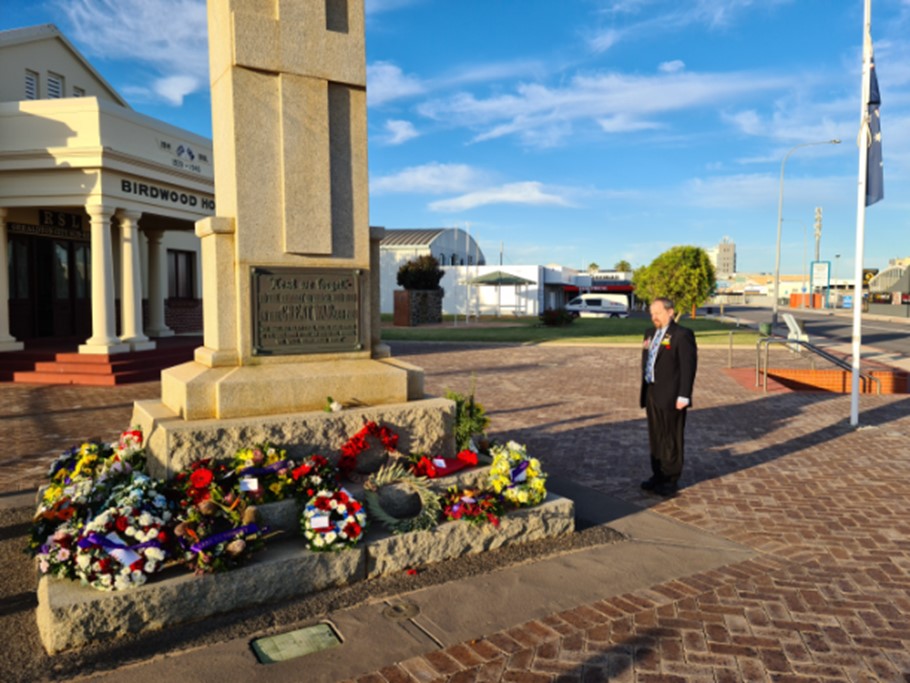
Being the Centenary of the RAAF, Squadron leader Mark Levitt was to have delivered the address at Geraldton’s dawn service then driven to Northampton to deliver the address there. Mark was locked down in Perth on short notice and was unable to attend. He was kind enough to email his speeches to me and Flt Lt Dave Power from the Geraldton Air Training Cadet Unit, who kindly delivered the address on Mark’s behalf on very short notice. I drove to Northampton after the gunfire breakfast at Geraldton and delivered the address there.
The pic below shows the beginning of the march approaching the dais
Special thanks are due to the City of Greater Geraldton Events Team, the Western Australian Police Force, Towns Football Club and the ADF’s Pilbara Regiment F Troop.
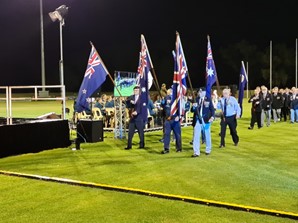
How it all happened!
The CEO of the Mid West Chamber of Commerce and Industry (MWCCI) Joanne Fabling rang and offered to reach out to their members on our behalf to make this all important event possible.
As a result, a number of chamber members most generously offered assistance.
-
First off the rank was Jackie Wasserman of MCS Security Services offering help with crowd control, traffic management and security.
-
Lane Court of 65 Thirty then offered all the Audio, Video live streaming and lighting required for the morning’s Service.
-
DIAB Engineering, CEO Glen Payne then offered to fabricate a ¾ size replica of the Geraldton War Memorial Cenotaph.
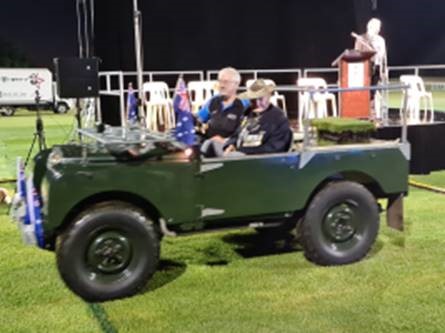 |
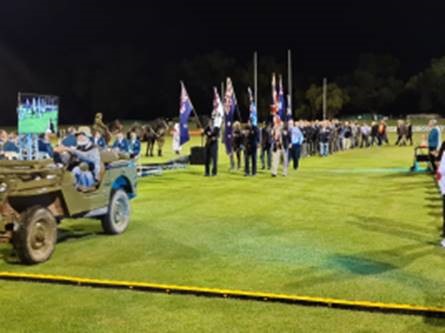 |
The smartest virus ever created.
-
IT KNOWS DISTANCE: At 1.5 meters from someone it drops to the ground but any closer and it will kill you.
-
IT CAN COUNT: As long as there are no more than 5 in a room you are safe, any more than that though and it will kill you
-
IT KNOWS WHAT BUILDINGS IT IS IN: If you’re in a Stadium or Bunnings you’re ok, but if you are at a Restaurant or in Aged Care it will kill you.
-
IT KNOWS IF YOU ARE EATING: If you are eating you can take your mask off in a restaurant, but if you are not eating you had better put your mask on because it will kill you.
-
IT KNOWS WHETHER YOU ARE STANDING OR SITTING IN A PUB/CLUB: If you are sitting and drinking you will be ok, but if you stand up and drink it will kill you.
-
IT KNOWS THE DIFFERENCE BETWEEN TALKING AND SINGING: If you talk you will be ok, but if you sing it will kill you.
-
IT KNOWS THE DIFFERENCE BETWEEN INSTRUMENTS: If you play drums you will be safe, but if you play a flute it will kill you.
-
IT KNOWS THE DIFFERENCE BETWEEN CHURCH AND PROTESTS: If you protest you will be ok, but if you go to Church it will kill you.
-
IT KNOWS IF YOU ARE AN ESSENTIAL WORKER OR NOT: If you’re an Essential Worker you can go to work and be safe even though you deal with multiple different people every day, but if you are not an Essential Worker, say an Office Worker, and you work inside with the same people every day, you had better work from home or it will kill you.
"Although I still cannot understand how it tells people to hoard toilet paper..!!!"
Old Farts.
Kev Rosser says: “I caught up with these blokes in Townsville on Sat 25 Sept 2021, all of us ex RADTECHA ”
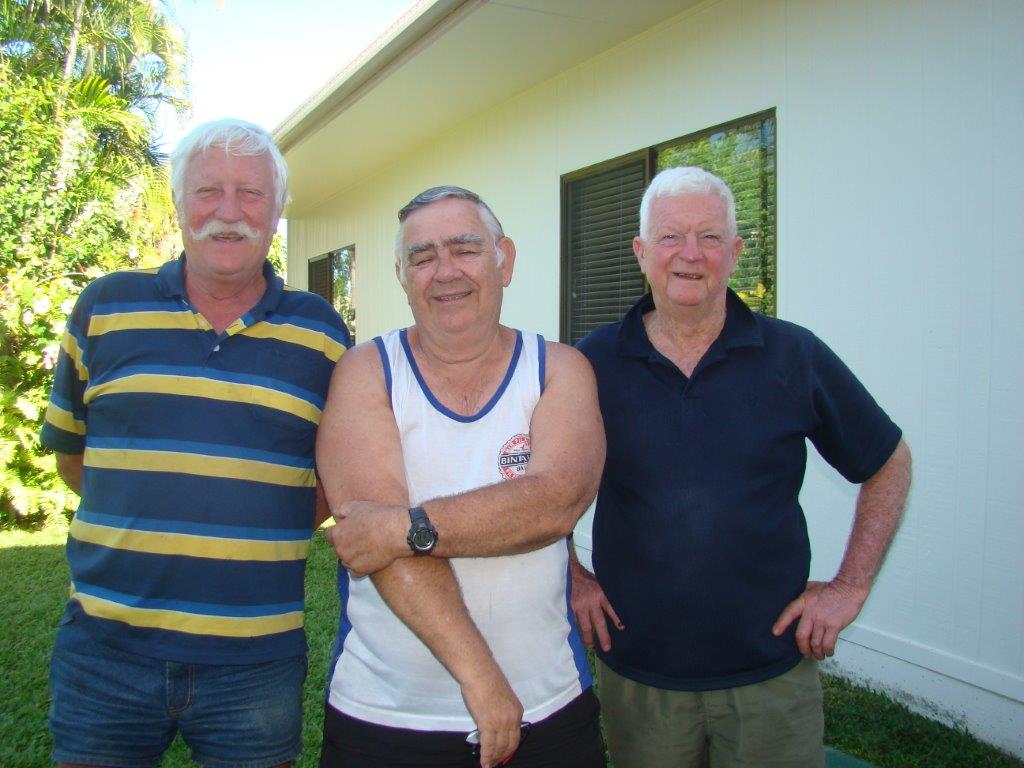
L-R: Kev Rosser, Brent "spook" Villiers and Bob Sackley.
1051 Rookies Course, Edinburgh, 1970.
John Mackie
John says: “Fred Holtman was our course NCO at rookies. I had heard of his passing, but it’s still a bit of a shock. He was a great NCO, and a really good bloke as well. He’s not hard to pick out in our course photo."
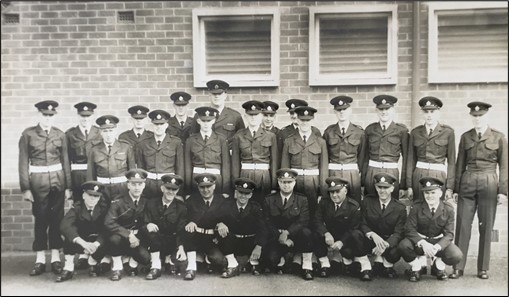
Brisbane River Fire.
After a Covid break last year, River Fire, which wraps up the three week Brisbane Festival, returned to Brisbane in September 2021. Every September Brisbane plays host to the Brisbane Festival, a festival of the arts showcasing theatre, music, dance, opera, circus and more. A major highlight of the festival is Brisbane’s Sunsuper Riverfire. Way more than just a fireworks display, this is a huge city event featuring a coordinated multi-venue pyrotechnic show, choreographed to an exciting soundtrack.
Ahead of the pyrotechnics display, in daylight hours, the RAAF’s C17 Globemaster and Army’s Aviation helicopters put on a demonstration along the Brisbane River. Years ago the mighty F-111 would do its fantastic night time ‘dump and burn’ but with most of them now in museums around the country, that spectacular is no longer available, instead, 36 Sqn at Amberley made available one of its C17 Globemasters which hurtled up and down the river at a level below some of the buildings. We reckon this is a better spectacle, jets and small aircraft are designed to be manoeuvrable but to see a giant aircraft zooming along at a height at which it’s not meant to be is something else. It’s like watching super V8s instead of F1 cars, F1 cars are meant to be fast and manoeuvrable, big old V8 Commodores are not – that’s what makes seeing them such a thrill.
The RAAF and Army did not disappoint anyone with their display – you can see it below.
Bob Howe.
Bob Howe was a navigator with 2 Sqn and flew in Phan Rang in Vietnam from May 1969 to May 1970. He was an avid photographer and took a heap of photos, here are some of them:
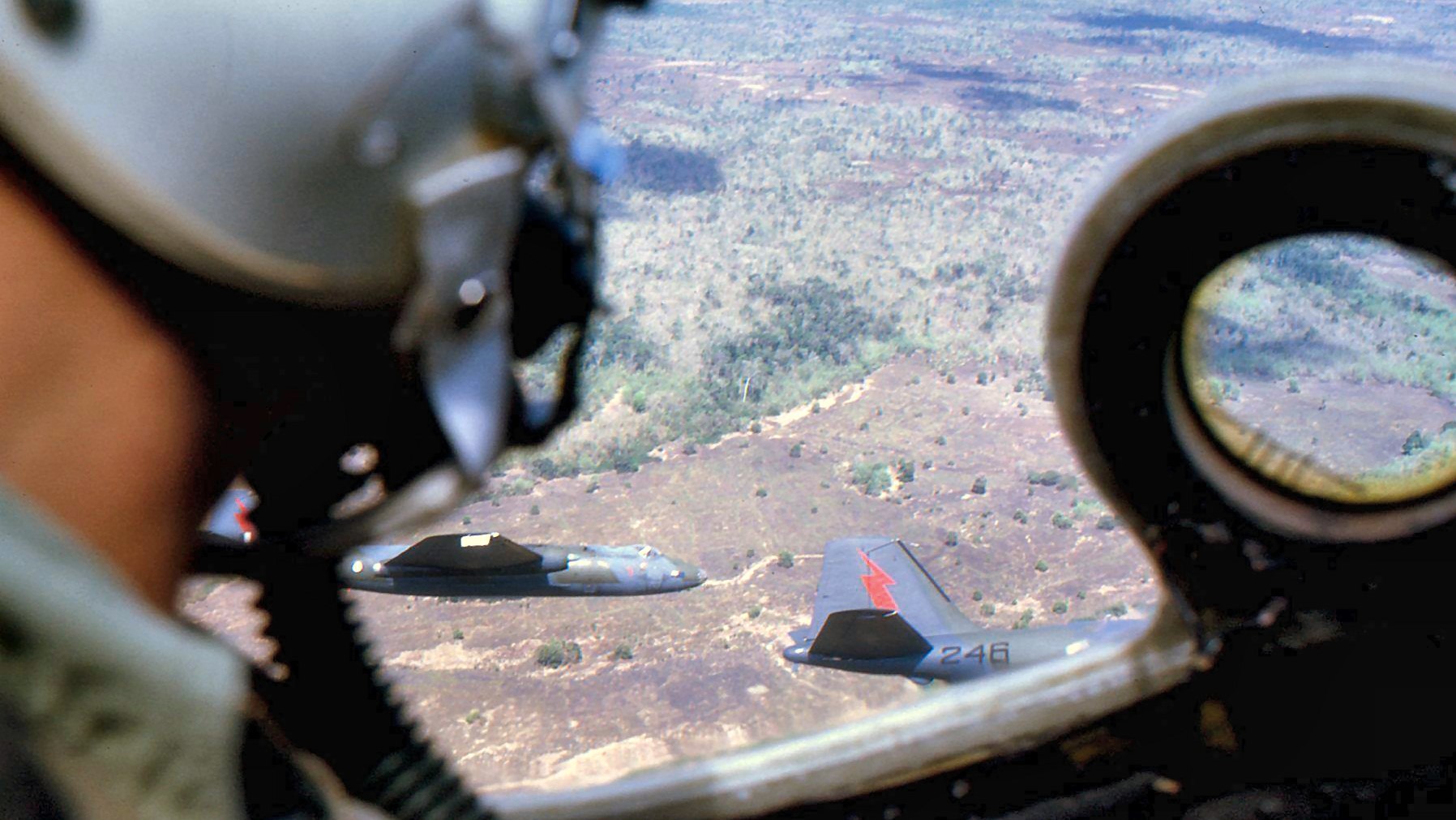
Formation flying over Dui Dat.
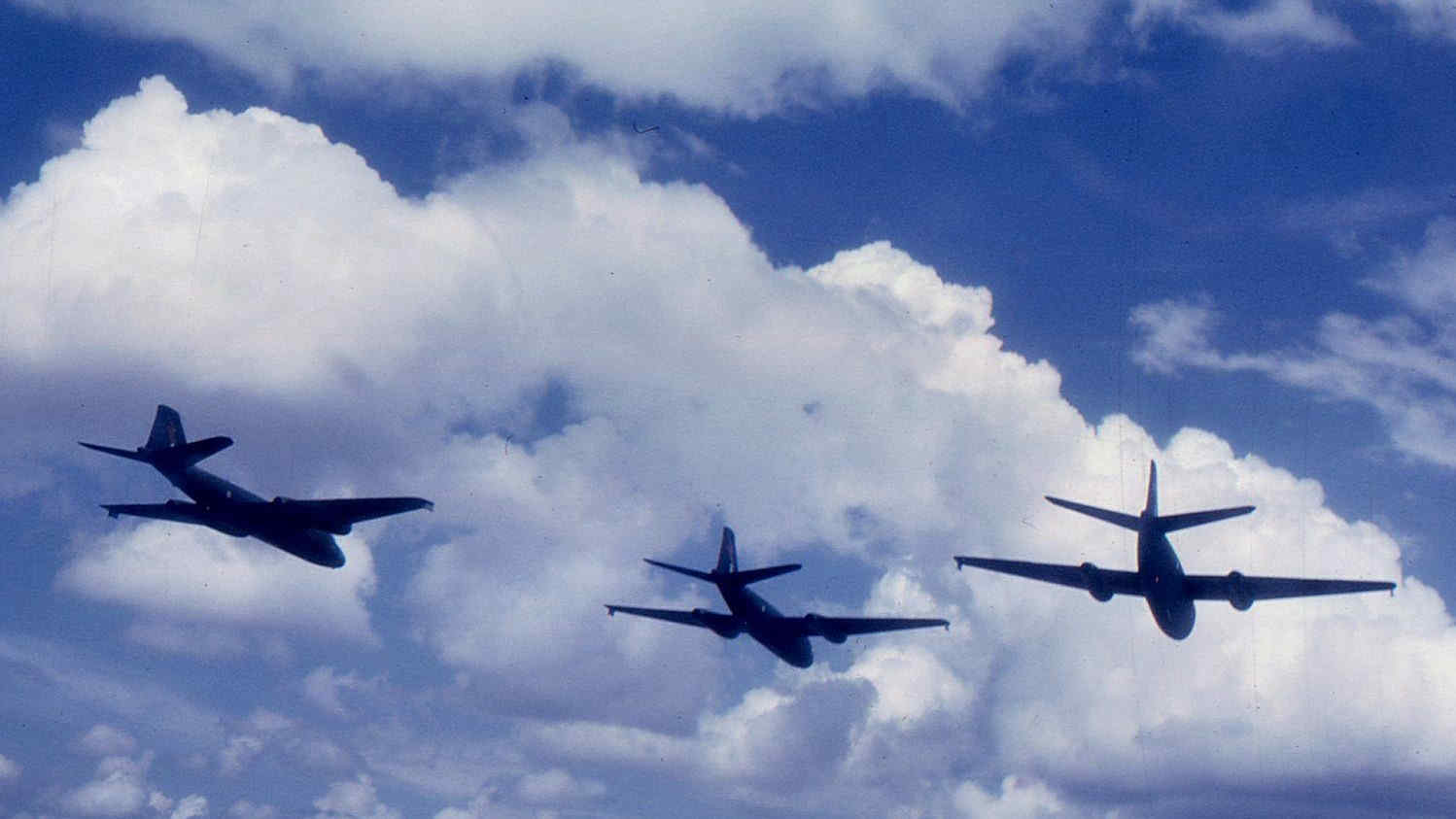
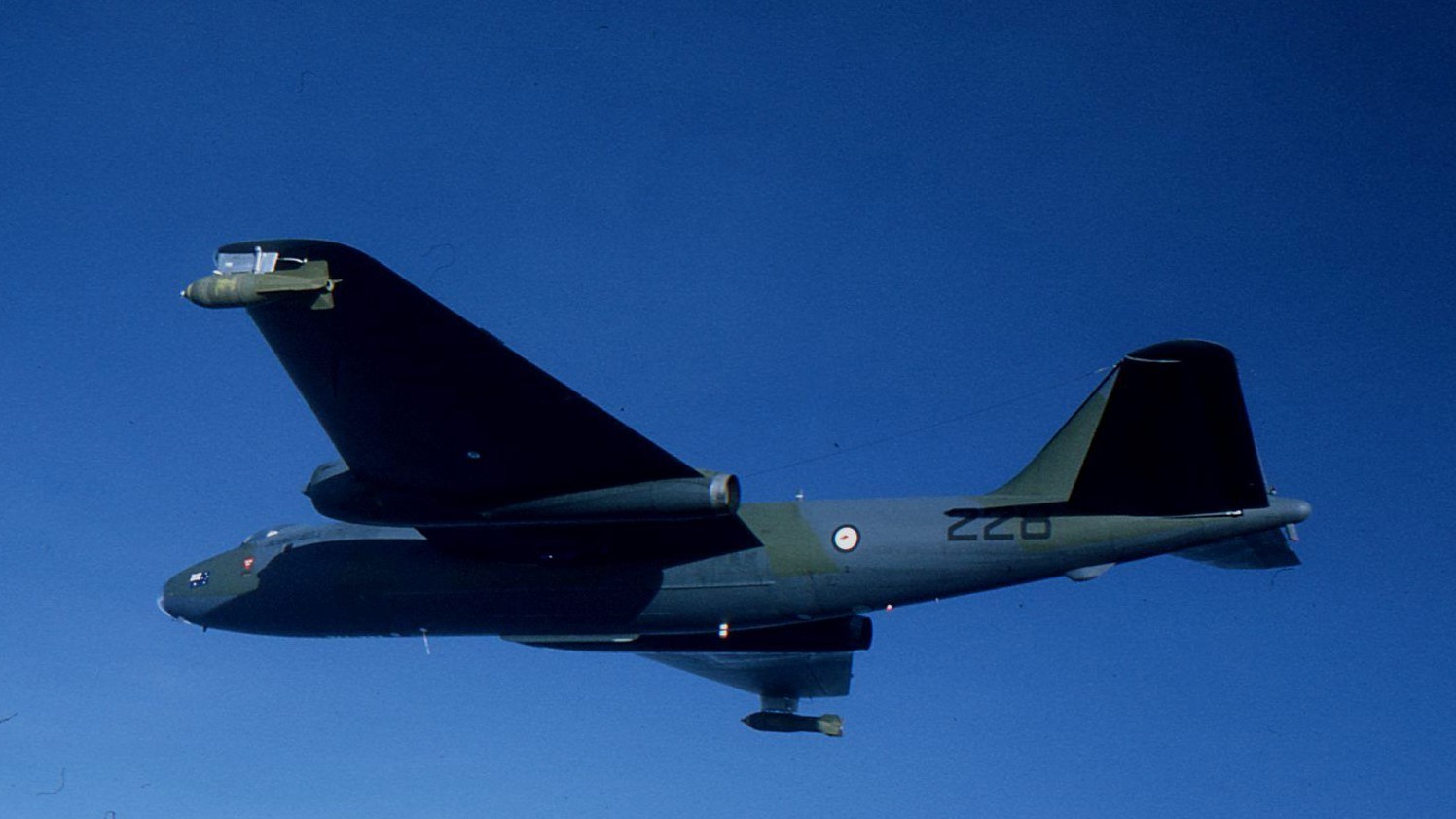
Off to do some damage.
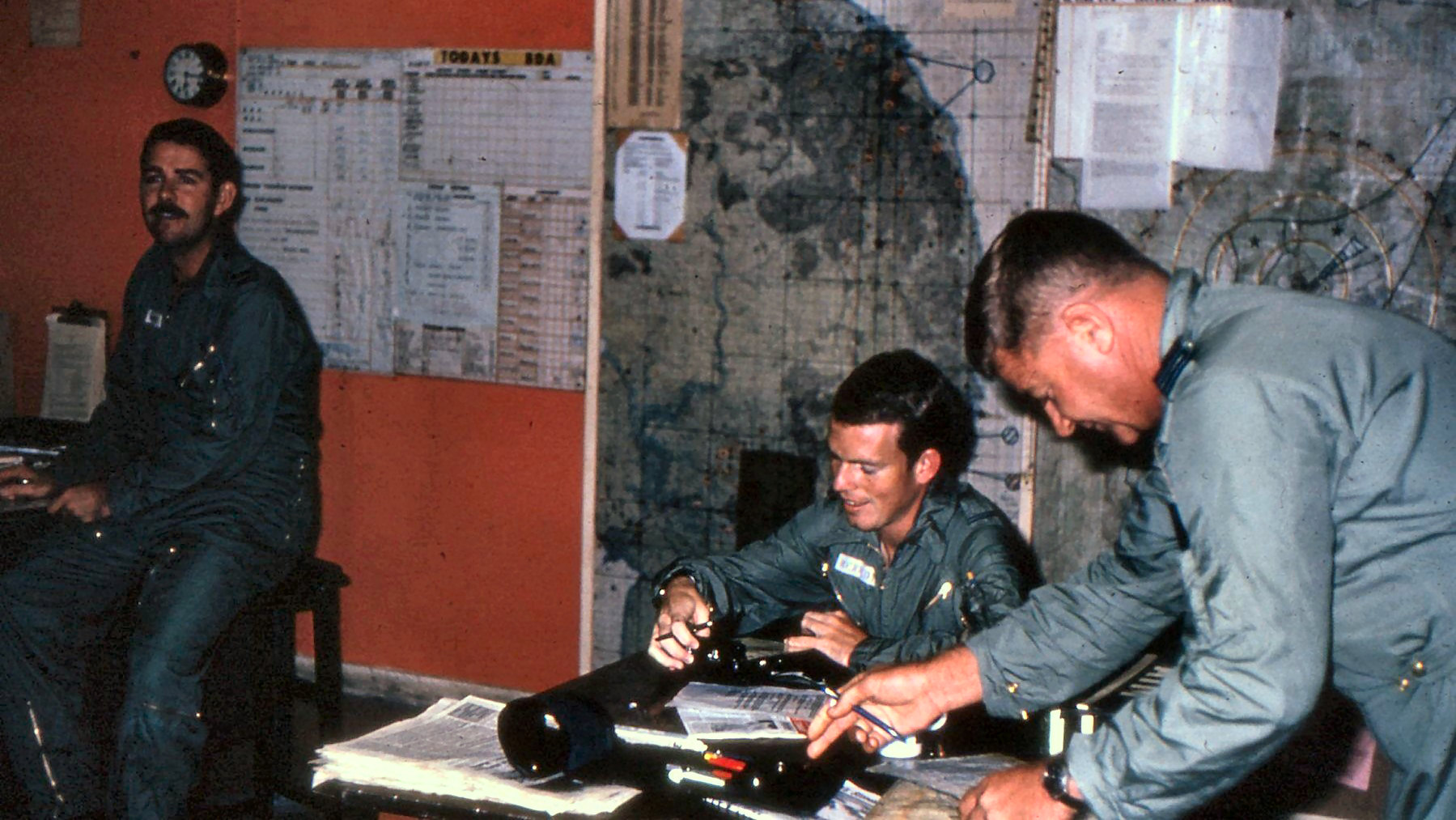
L-R: Bob Howe, John Kennedy, Bruce Hunt – getting ready for another trip.
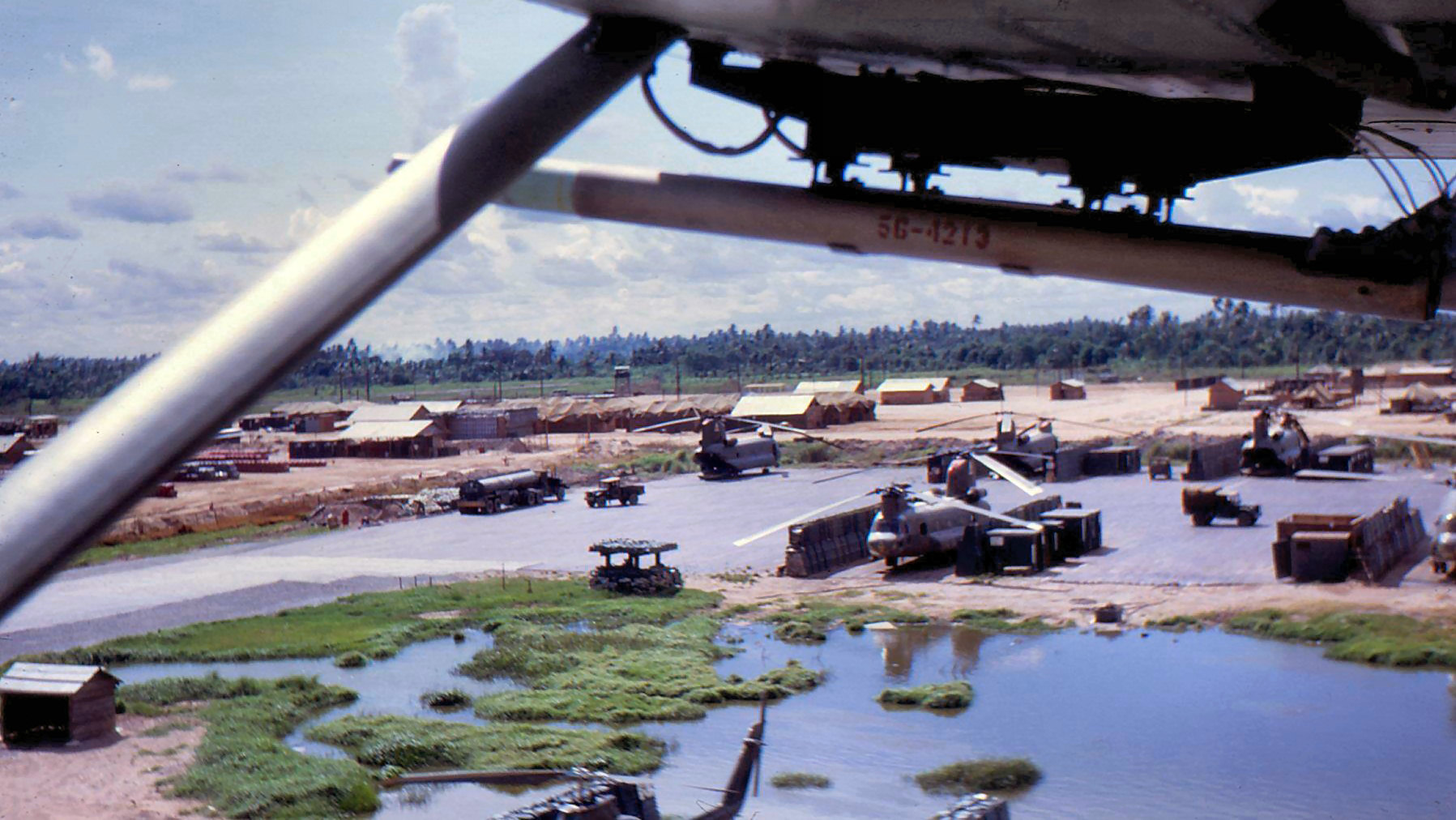
Hitching a ride in an FAC aircraft at Can Tho, on the Mekong Delta.
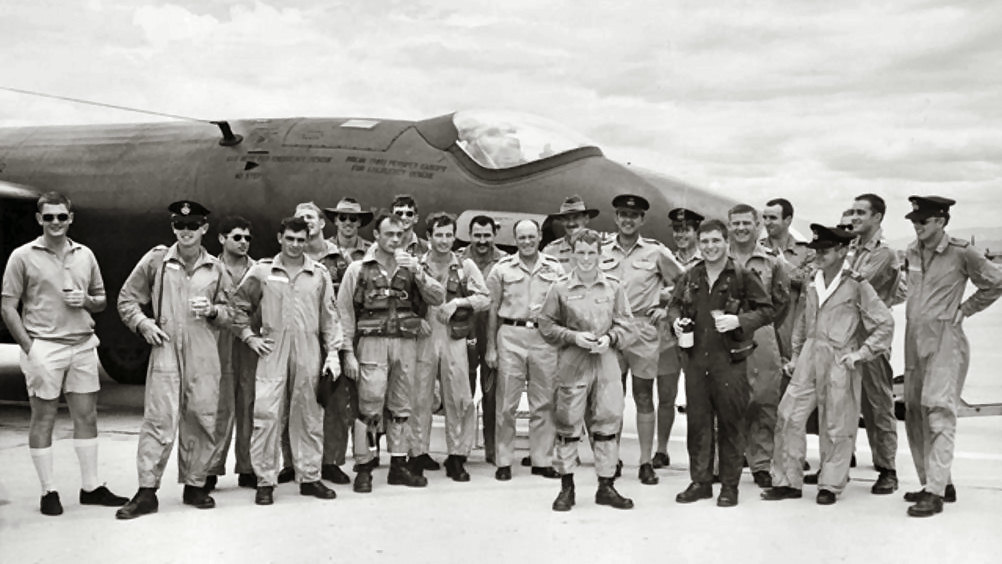
In front, John Kennedy and David Palmer Phan Rang. This group of aircrew had gathered on the tarmac at Phan Rang Air Base for a 'hose-down' celebration for the Canberra crew (Kennedy and Palmer) who had just completed their last bombing mission. In the celebration, which became something of a tradition with No. 2 Squadron at Phan Rang, a fire tender met the crew on their arrival back at base after completing their final mission and hosed their aircraft down. David Palmer had a total of 28 trips to Vietnam, mainly as a Nav on Hercs.
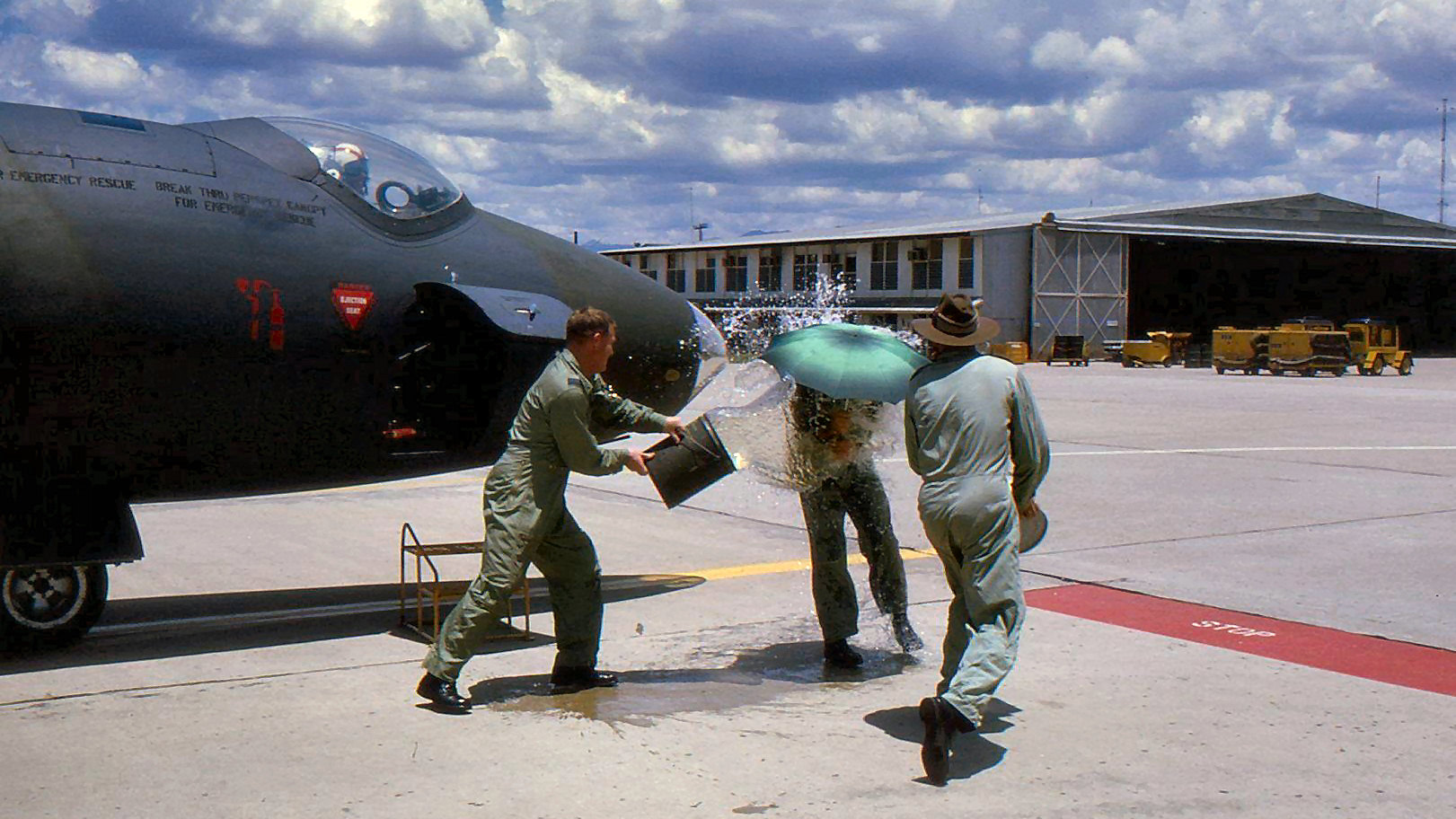
Bob Howe getting a “personal” hose down.
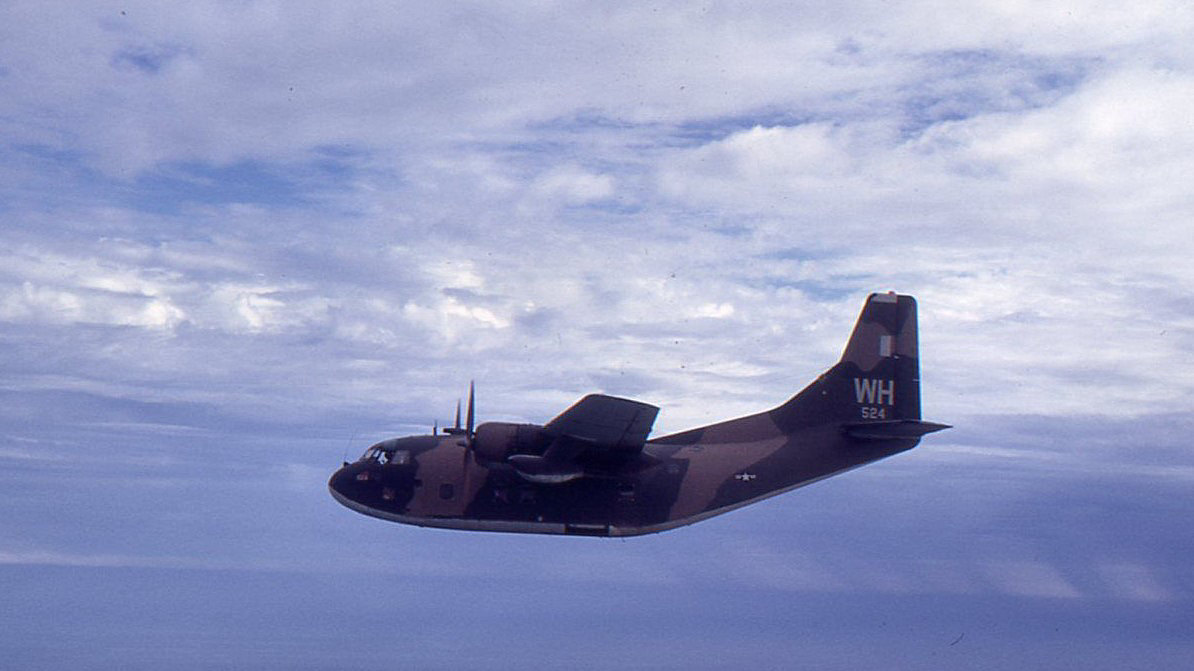
USAF C-123.
Pilots trained in the UK.
Between 1966 and 1971 the RAAF sent 23 pilot trainees in 6 groups to the UK to be trained by the RAF. Twenty graduated. This unusual event was precipitated by an increased requirement for pilots to be trained for the three RAAF squadrons in Vietnam and transitional problems in the change from Vampire to Macchi MB326 training at 2FTS that impacted on the number of pilots who could be trained.
They were:
| Period | Names | RAAF Course equivalent |
| Sept 66 – June 68 | Vic Botha, Bill Fitzhenry, Dave Freedman. | 63 |
| Feb 67 – Aug 68 | Mick Cavenagh, Mike Nixon, Brian Weston. | 63 |
| Feb 68 – Dec 69 | Bob Chaplin, Noel Furber, Reg Van Leuvan, Bob Hobson, Greg Walsh, Ross Warne. | 69 |
| Oct 68 – Sept 70 | Mark Fielding, Egon Fice, Tony Dekeivit. | 71 |
| Nov 68 – Dec 70 | Paul Devine, Ian Gonsal, Bruce Hartwich, John Simmonds. | 71 |
| Feb 69 – Dec 70 | Al Titheridge, Doug Graham, Graham Thomas. | 71 |

Butterworth.
A lot of blokes, with their families, spent a very enjoyable time posted to the RAAF’s tropical resort - Butterworth. The Malayan Emergency had begun in mid-1948 but Butterworth did not become heavily involved until the spring of 1950, when it began hosting detachments of fighters and light bombers needed to provide air support in Northern Malaya. One of the first units to arrive was 33 Sqn of the RAF with their Tempest F2s (right), which carried out rocket attacks on bandit positions. By early 1951 the poor serviceability of the Tempests, the last in RAF service, led to their replacement by De Havilland Hornets.
The succession of detachments reached a milestone in February 1955 with the arrival of four Canberra B6s of No.101 Sqn from the UK, the first RAF jet bomber squadron to fly on war operations. No.101 was succeeded by Canberra detachments from No.617, 12, and 9 Sqns, which in effect replaced the earlier Lincoln detachments at Tengah.
In a changing political and military scene, Butterworth was handed over on 1 July 1958 to the RAAF which had plans to use it as the base for a fighter and bomber Wing under the build-up of the Commonwealth Strategic Reserve in Malaya. No.2 and No.3 Sqns (Canberras and Sabres) of the RAAF arrived in November 1958, joining small, periodic detachments of RAF Bomber Command Valiants. A further RAAF Sabre squadron, No.77, was added in 1959, intended but not needed for the Firedog [anti-insurgency] campaign, which was drawing to a close.
At its peak in the 1970s the base was home to almost 5,000 Australian personnel and their families, but as at 2007 this has dwindled down to a permanent staff of just 40 RAAF personnel and 126 from the Australian Army (although the average number deployed at the base during annual exercises is around 700). The RAAF also employs 75 local civilian staff.
Two notable RAAF units stationed at the base were 3 Squadron and 77 Squadron which saw service with their Sabres during the Malayan Emergency through the confrontation with Indonesia. From August 1964 onward, these Sabres responded on several occasions to approaches by MiG-21 fighter jets of the Indonesian Air Force towards Malaysian airspace, but the Indonesian aircraft always turned back before crossing the international boundary, thereby averting possible conflict. Another notable unit was 2 Squadron which arrived at Butterworth in July 1958. Flying Canberras, the squadron flew missions immediately after arriving including formation bombing runs against Communist guerrilla targets (Oh? How do you do that?) and remained at Butterworth until 1967 when it moved to Phan Rang in Vietnam.
75 Squadron arrived at Butterworth with the Mirage IIIOs on the 18th May 1967, replacing 3 Squadron which returned to Australia to themselves re-equip with the Mirage. 3 Squadron returned in February 1969, replacing 77 Squadron, with both squadrons also alternating responsibility for the detachment at RAF Tengah in Singapore. 75 Squadron remained at Butterworth until it was withdrawn to Darwin in October 1983, with 3 Squadron following to Williamtown in 1986. A number of former 3 Squadron aircraft and personnel remained at Butterworth and were formed as No. 79 Squadron RAAF, until they finally departed in May 1988.
Here are some photos taken during that period.
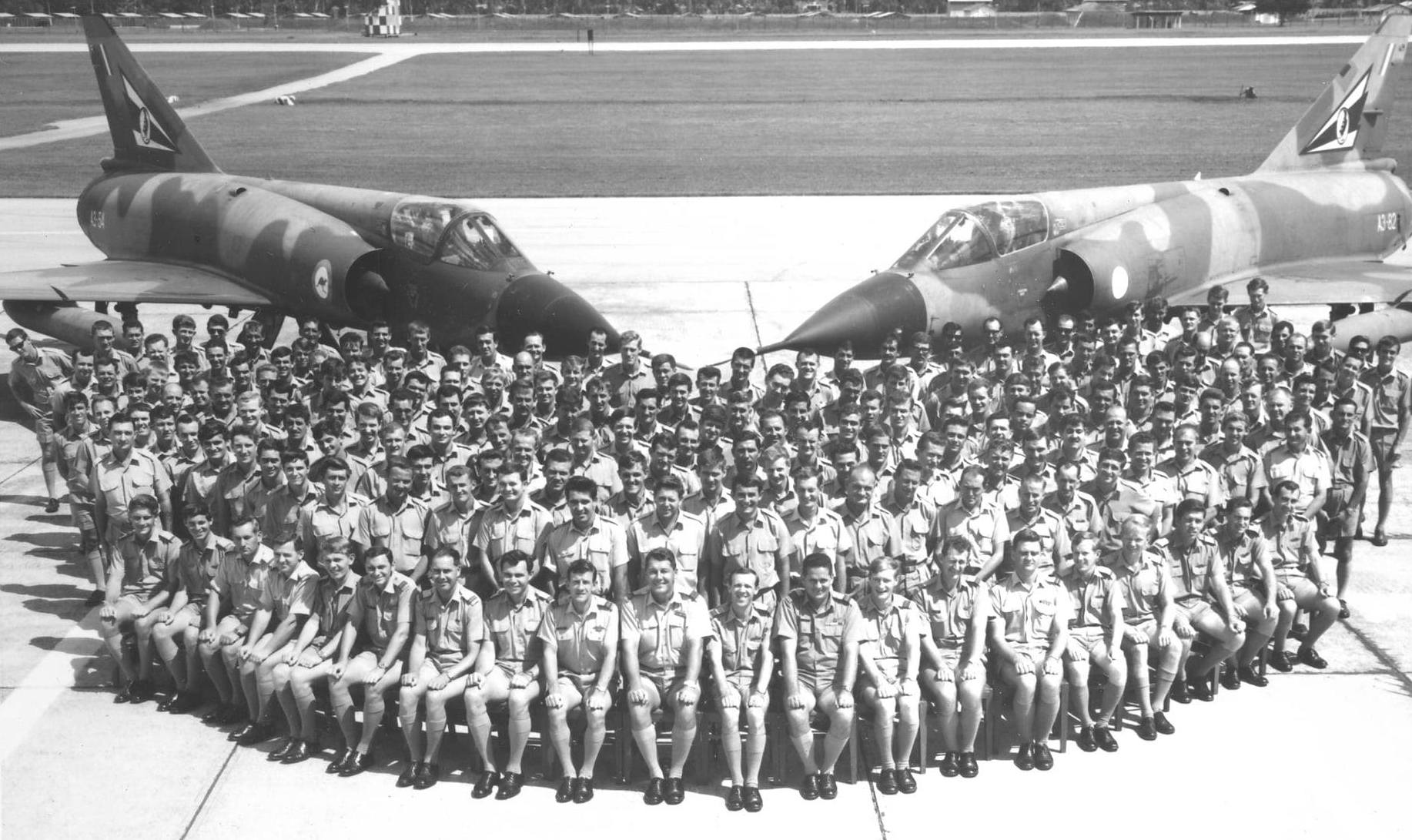
75 Sqn, 1970.
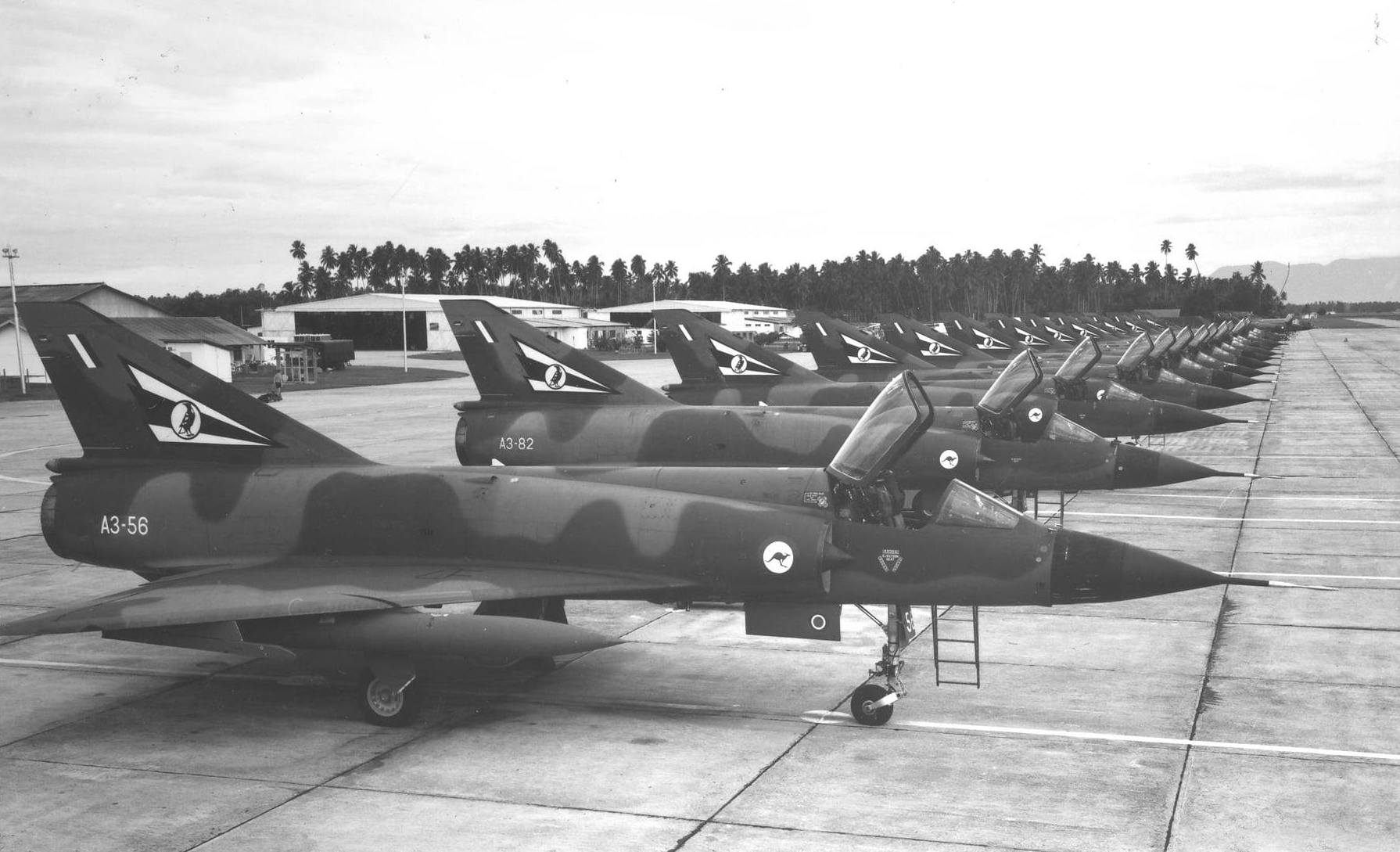
75 Sqn aircraft lined up – a perfect target for a strafing aircraft.
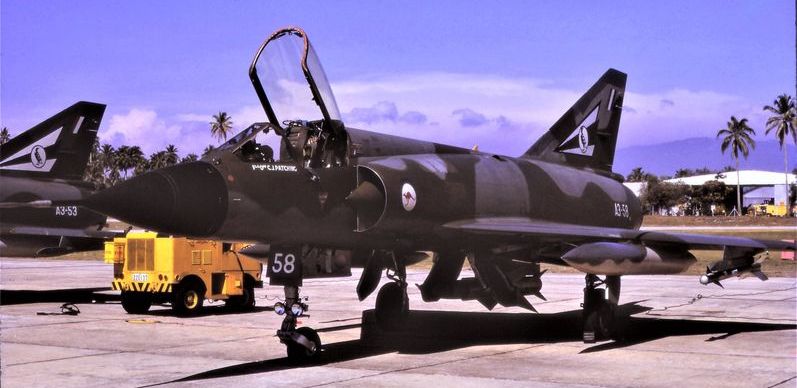
75 Sqn – 1974.
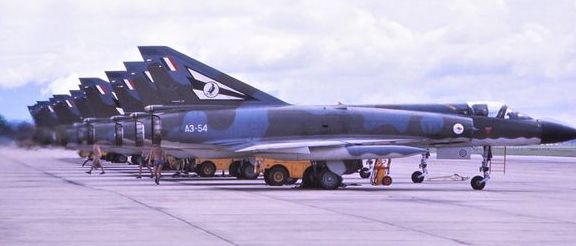
There’s no denying it, the French knew how to build a great looking aeroplane.
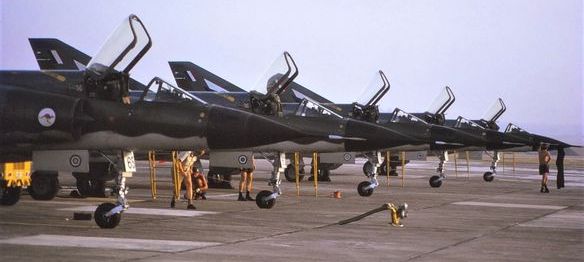
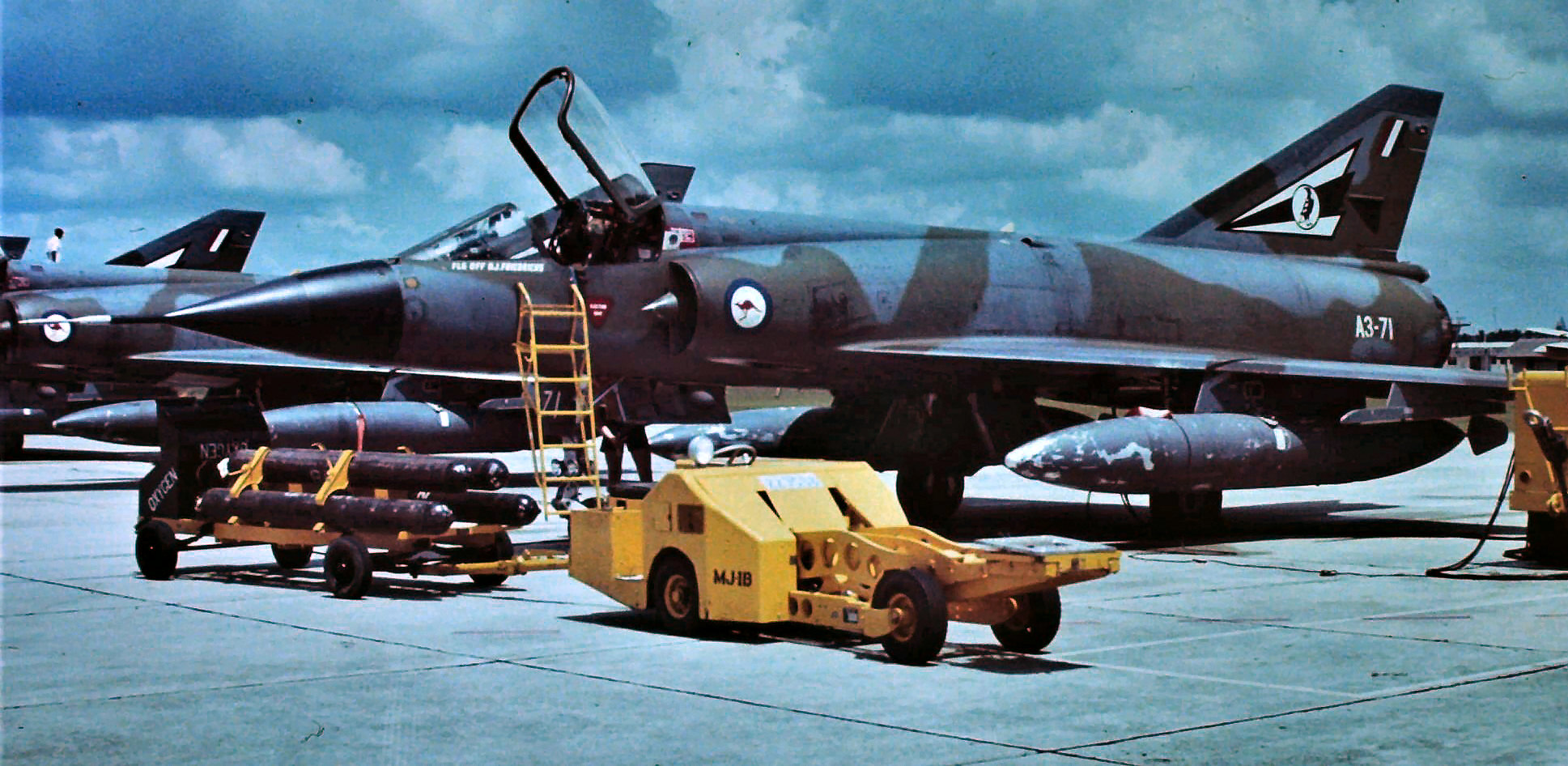
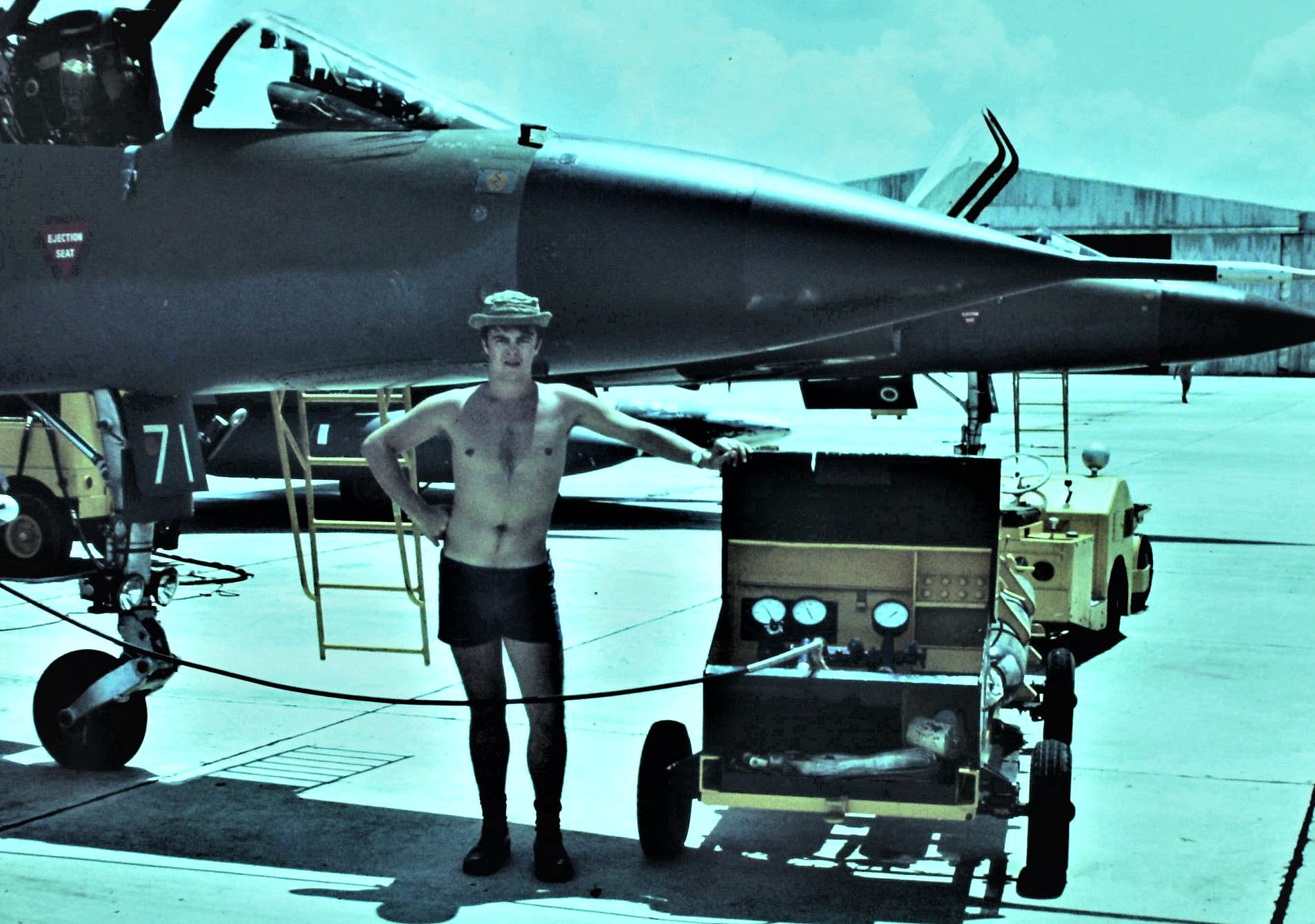
Dennis Cullen – 77 Sqn, 1972

A “D” service.
This is how you get a D service done in a hurry, 35 Sqn Vung Tau – there must have been a keg in the hangar.
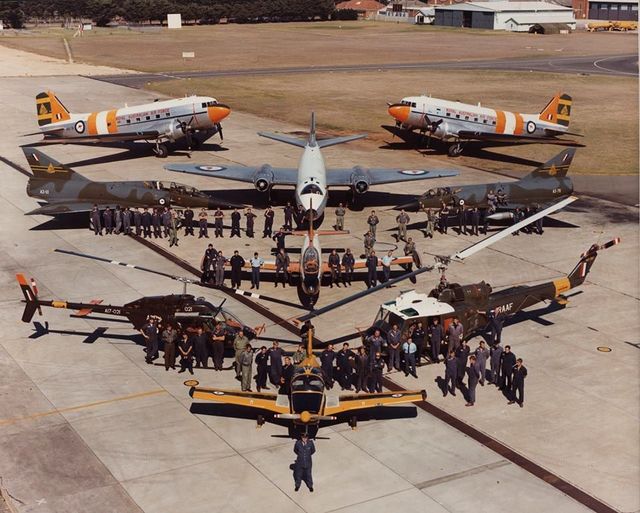
ARDU – 1975.

Back Go to page: 1 2 3 4 5 6 7 8 9 10 11 12 13 14 15 16 17 18 19 20 Forward